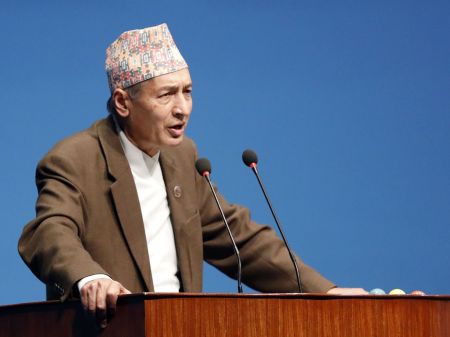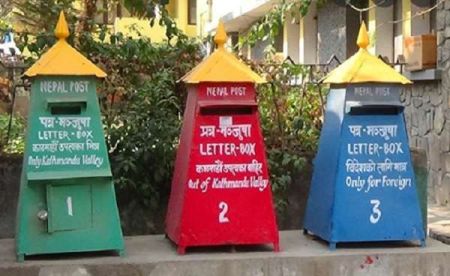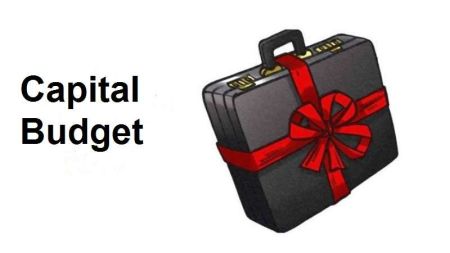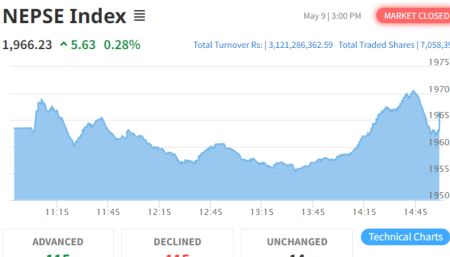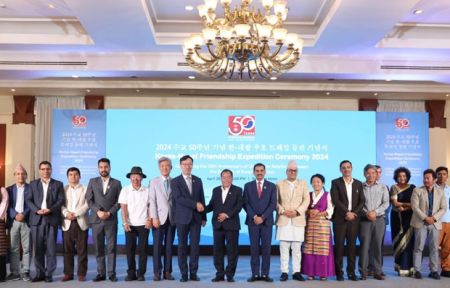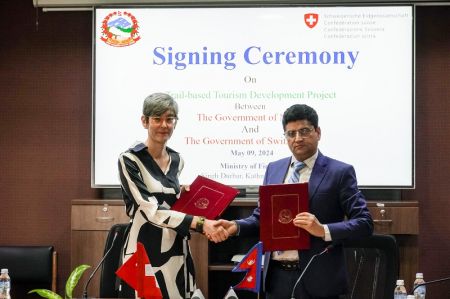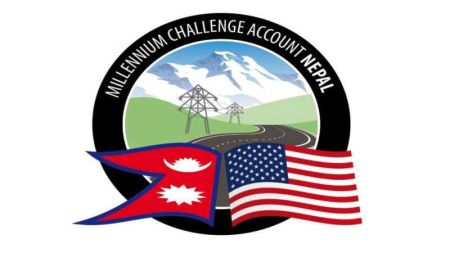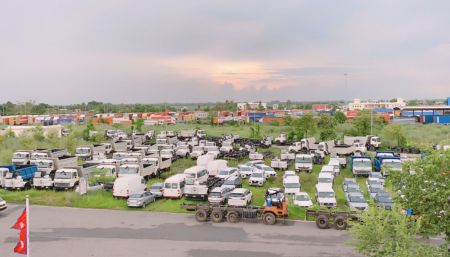BY Dr Ghanashyam Ojha
The Nepali economy seems to have been ensnared by sluggish growth and high migration. The country’s average growth rate has remained below 5% over the past 25 years, while migration is increasing at an alarming rate. Official reports show that at least 3,000 Nepalis are leaving the country daily in pursuit of better job prospects, education, and skills overseas. The majority of those, who land in developed countries such as the UK, Australia, the US, and Europe, are less likely to return. Nepal is thus compelled to witness the exodus of its knowledge and capital, and it is causing severe shortages of skilled, semi-skilled or unskilled workforce domestically.
This trend must stop! Otherwise, we will be destined to live with a sick nation without hope of prosperity. The only way to break the trap of “low growth high migration” is to increase investment and create jobs. Studies have identified that Nepal needs to invest at least 10-15% of its GDP annually in the infrastructure sector until 2030 to meet its Sustainable Development Goal (SDG) commitments. In real terms, Nepal has to spend at least Rs 500-750 billion annually. But the current expenditure on infrastructure is below Rs 300 billion annually. This means there is an investment gap of around Rs 300-400 billion annually, while the sectoral investment gap is astronomically increasing. For example, around Rs 260 billion is required in the energy sector, Rs 155 billion in road infra, and Rs 460 billion in transport, aviation, and industry. Given the strained domestic finance, Foreign Direct Investment (FDI) is the only way to fill the gap.
The government is organising the Nepal Investment Summit in April this year. This is a positive initiative towards attracting FDI because the summit can bring potential investors from around the globe to Nepal. Such a platform can be best utilised to spread a positive message to potential investors about investment opportunities in Nepal. The event can also spur legal reforms for private investment in the country. Therefore, an investment summit should be considered as a tool for attracting investments, and this shouldn’t be a one-time event. Rather, the investment summit must be planned as a part of the integrated strategy for bringing in FDI in the country. There must be a clear plan of action before, during, and after the summit. Likewise, the post-summit plan is extremely important and it must be integrated into the summit plan. Otherwise, such summits may bring more participants but less investments.
Studies show that the FDI realisation stands at around 30-40% against the commitments in Nepal. According to the Department of Industry, Nepal received FDI pledges totaling Rs 21.88 billion for 178 projects in the first four months of fiscal year 2023/2024. Among the sectors, tourism has received 86.48% of the commitments, whereas the service sector has received 69.39%, manufacturing 12.7%, ICT 5.3%, and infrastructure sector 4.2%. The latest survey report on FDI, published by the Nepal Rastra Bank (NRB), has indicated a significant gap in approved FDI and actual net FDI inflows in the country. Between 1995/96 and 2021/22, the total actual net FDI inflow stood at around 36.2% of total FDI approval as per the report. According to the Nepal Development Update published by the World Bank in October last year, FDI remained negligible and contributed a mere 0.1 per cent of the GDP.
This trend must stop! Otherwise, we will be destined to live with a sick nation without hope of prosperity. The only way to break the trap of “low growth high migration” is to increase investment and create jobs.
Bridging the Gap between FDI commitment and Realisation
Policymakers need to seriously meditate on bridging the gap between FDI commitment and realisation. The following measures can be instrumental for the purpose:
1. Integrated approach to project preparation: An integrated approach is required for project preparation. For example, project development modality, relevant policies for executing the particular project, requirement of land for the project, and engagement of relevant government agencies must be discussed while preparing any investable projects. Such an approach eases the project implementation process, and the private sector (investors) would find the proposition much more attractive. We must take lessons from the delayed projects such as the West Seti Hydropower Project, Budhi Gandaki Hydropower Project, Kathmandu-Terai/Madhesh Fast Track, Nijgadh International Airport, etc which have incurred astronomical economic and financial losses to the nation.
The government needs to collaborate with IT industries and provide integrated infrastructure facilities because the sector alone can absorb hundreds of educated youths in the country.
2. Promotion of IT industry: Information technology (IT) sector has been expanding aggressively in Nepal. A study conducted by IIDS in 2022 states that Nepal exported IT services worth around Rs 67 billion. This is very captivating for the sectoral growth, and the sector will flourish provided the government facilitates it. The sector needs infrastructures, favourable policies, and relevant human resources. The government needs to collaborate with IT industries and provide integrated infrastructure facilities because the sector alone can absorb hundreds of educated youths in the country.
3. Facilitator, not regulator: Our government system, including bureaucracy, was groomed to be a regulator, but this needs to change. With the changed context of a free market economy, the government system needs to present itself to the investors as a facilitator and partner with the investors for economic development. For example, the investment facilitation agency can provide a dedicated investment facilitator to an investor given the size of its investment. The investment facilitator will navigate through agencies on behalf of the investor, and the process moves fast.
4. Promote Projects: Investors have a choice to invest in any country. Countries such as India, Bangladesh, Indonesia, the Philippines, Ethiopia, Rwanda and others are competing for FDI. Nepal needs to prove its competitive edge so that investors are attracted to come here and invest.
5. Sectoral Prioritisation: The government needs to prioritise its sectors and accordingly develop them with legal and policy interventions. Since the hydropower sector (generation of at least 42,000 MW is commercially viable) has growth potential, this sector needs the government's attention.
Ojha is an Investment expert.






